The following list, adapted from Thurley’s map, includes castles, palaces, large houses, lesser houses, hunting lodges, confiscated houses, monastic conversions and defensive fortresses and is based on the research of Simon Thurley.
It’s important to note that this is indeed a work in progress. Where something remains of the palace or house today, a link will be included. If the building is also on my Anne Boleyn list of places then the title will be linked to the relevant entry where you will find more information about the history of the property and its links to Anne Boleyn.
Eventually, I hope to provide some information about all the properties but considering that there are over 60 on the list, this may take some time.
I feel that I should also mention that the list of Henry VIII’s palaces and houses varies depending on whether you include confiscated houses that Henry owned but never used and defensive castles. It also varies depending on what year in Henry’s reign you are researching. I have in my reading seen a number of other properties listed as belonging to Henry VIII at some point during his reign and have added those at the end of the list.
Visit Windsor Castle’s official website here.
Visit the Tower of London’s official website here.
Whitehall Palace
Before being destroyed by fire in 1698, Whitehall had grown to be one of the largest palaces in Europe, boasting an unbelievable 1500 rooms! King Henry VIII married Anne Boleyn and Jane Seymour in the palace and also died there in 1547. Today, the only thing remaining is the Banqueting House built in 1622 although there are parts of the old palace incorporated in other buildings.
Some ruins from Whitehall can be found outside the Ministry of Defense.
(Read more about Whitehall and Anne Boleyn’s connection to it here.)
Nonsuch Palace
A Tudor royal palace built by Henry VIII in Surrey. Work commenced in 1538 and was not yet complete when Henry died in 1547. The palace stood until 1682-83, when Barbara, Countess of Castlemaine, demolished it. Some elements of the building have been incorporated into other buildings but no trace of the palace remains on site today.
Loseley House’s magnificent Great Hall contains panelling from Henry VIII’s Nonsuch Palace and his banqueting tents.
Read more about Nonsuch Palace here.
Visit Eltham’s official website here.
Visit Hampton Court’s official website here.
For more information click here.
Hatfield House’s official website.
Westminster Abbey official website
http://www.parliament.uk/about/living-heritage/building/palace/westminsterhall/
Palace of Beaulieu (also known as New Hall)
http://www.newhallschool.co.uk/about-new-hall/history-of-new-hall-and-the-school/
Greenwich
Knole
On the outskirts of Sevenoaks is a beautiful stately home set in a magnificent deer park. In Tudor times, Knole belonged to Thomas Cranmer, the Archbishop of Canterbury who declared Henry VIII’s marriage to first wife Katherine void and his marriage to Anne Boleyn valid. Little good it did him, Henry fancied Knole for himself and in 1538 he forced Cranmer to hand it over. Portraits of Tudor monarchs, including Henry and Anne, are just some of the many treasures you’ll find here. The superb medieval deer park where Henry hunted is the only one remaining in Kent.
http://www.nationaltrust.org.uk/main/w-vh/w-visits/w-findaplace/w-knole/w-knole-history.htm
Leeds Castle
http://www.leeds-castle.com/goto.php?ref=y&sess=u0%7Cp0%7Cn0%7Cc0%7Cs0%7Cg1%7Cd0&
Woodstock
Woodstock palace was a royal residence in the English town of Woodstock. Elizabeth I was imprisoned here in 1554. Woodstock Palace was destroyed during the English Civil War and Blenheim Palace was later built on the same site.
Richmond/Sheen
In the 14th century, Sir John Burghersh held the Manor of Ewelme in Oxfordshire. On his death in 1491, it passed to his younger daughter, Maud, who had married Thomas Chaucer, son of the poet Geoffrey Chaucer.
Find out more about Ewelme here.
Ludlow Castle
http://www.ludlowcastle.com/Pages/history.aspx
Oatlands Palace
Ampthill Castle
Woking Palace
http://www.woking.gov.uk/woking/heritage/palace
Halnaker
Petworth
Penshurst Place
Visit Penshurst Place’s official website here.
Guildford
West Horsley
Westenhanger
Charing
Canterbury
Otford
Beddington
Rochester
Dartford
Suffolk Place
Hackney
Wanstead
Havering
Chobham
http://www.chobham.info/chobham_park_2.htm
http://www.s-george.org.uk/hanworth.html
Syon
Mortlake
Parlaunt
Ditton
Chelsea
Enfield
Bridewell
Reading
Langley
The More
St Alban’s
Ashridge
Dunstable
Grafton
Hertford
Hunsdon
Tyttenhangar
Esher
Wayneflete’s Tower is the only surviving remains of the late 15th century Bishops palace and later Royal Palace of Esher.
Tickenhill
Fotheringhay
Collyweston
Hull
A coastal fortress built by Henry VIII between 1538 and 1544 and situated in what is now the city of Kingston upon Hull in the historic county of the East Riding of Yorkshire.
Kenilworth
http://www.english-heritage.org.uk/daysout/properties/kenilworth-castle//
York
Newcastle
Other properties not included in Thurley’s list:
Dover Castle
Baynard Castle
Palace Pendennis
Raglan Castle
Farnham
Chester Castle
Pembroke Castle
References:
Thurley, S. The Royal Palaces of Tudor England, 1993.
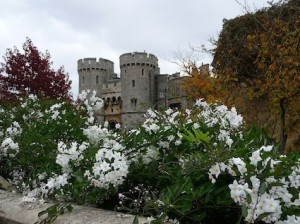
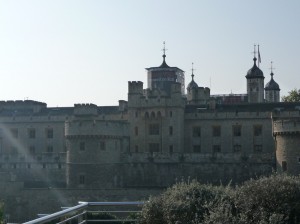
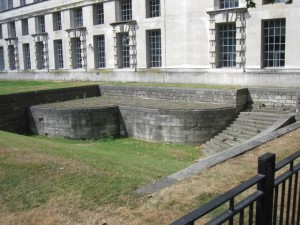
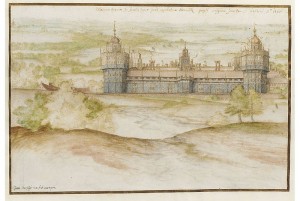
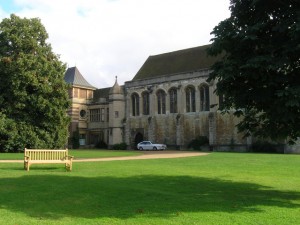
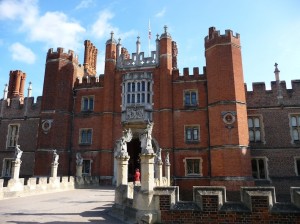
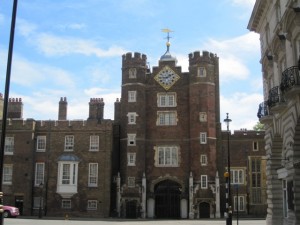

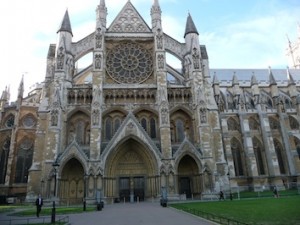
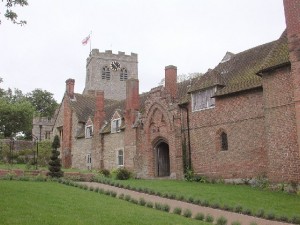
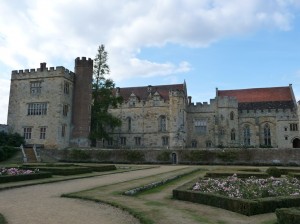















Henry VIII also owned Apethorpe Hall in Northamptonshire, which he acquired in 1543. When he died in 1549, it passed to his daughter Elizabeth. She disposed of it by exchange in 1552 to Sir Walter Mildmay who later was her Chancellor of the Exchequer when she became Queen. She stayed as his guest in one of her progresses in 1566. There is no evidence that Henry ever visited.
Thank you Rob! I will add this to the list. Natalie
Thanks so much for all this info.
This is so impressive, I mean, I know he was a king, but these are so many…
To bad not all of them exist as they were today!!!
Hi Natalie
I wonder if you have heard of Tudor Court at Iron Acton a small village in South Gloucestershire. In the 16th Century it was owned by Nicholas Poyntz and it was visited by King Henry and Anne Boleyn on there 1535 tour of the west country. Practically only the east wing survives now – but apparently it is a fine example of Tudor architecture.
I have heard of Iron Acton Carol, it is wonderful! It is one of my 29 Anne Boleyn locations, see the post here:
https://onthetudortrail.com/Blog/anne-boleyn-places/palaces-and-houses/acton-court/
Thank you!
Hi Natalie Sorry I did not realize that Iron Acton was already on your list. It sounds like an interesting place and somewhere I would certainly like to visit
That’s fine Carol. I am also looking forward to visiting on my next visit to the UK. So many places, so little time!
Hi
pleased to see your website I will recommend it to
the primary schools I work with (160/year)
Henry
The Henry Tudor Drama Company
http://www.henrytudor.co.uk
Why thank you Henry!
I have been watching the TV series by showtime called “The Tudors” there is a scene where Henry is grieving for Jane Seymour and he designs an elaborate palace which he instructs Cromwell to have built. In a following scene he takes Katherine Howard to view the completed palace – what is it called, where is it located and does it still exist?
Hi Lisa, the palace you are referring to is Nonsuch Palace, a royal palace built by Henry VIII in Surrey. Work commenced in 1538 and was not yet complete when Henry died in 1547. The palace stood until 1682-83, when Barbara, Countess of Castlemaine, demolished it. Some elements of the building have been incorporated into other buildings but no trace of the palace remains on site today. You can read a post I wrote about Nonsuch here:
https://onthetudortrail.com/Blog/2011/03/09/nonsuch-palace-henry-viiis-privy-palace/ Hope this helps!
Hi I realise this is an old post but wanted to check you were aware that henry built nonsuch to celebrate Edward not to grieve Jane. You may already know bit how I read the post made it sound (to me) it was to remember his Queen.
Hi Natalie,
In David Loades’s work on Henry VIII’s Court (‘The Tudor Court’, Headstart History) he provides an appendix with all of Henry’s houses listed in it. Obviously, many do not still survive, but that could help you find those which do?
Thank you for letting me know Lauren! I have owned this book for a while now but hadn’t gotten around to reading it – this will be useful!
Hi – does anyone know where Henry would likely to have held Privy Council meetings in 1521? Can you confirm that Thomas Wolsey and Thomas More would have attended? Thanks.
Great fosters in Egham Surrey was built for Henry viii commissioned by Anne Boleyn it is exactly 9miles from Windsor and exactly 9 miles from Hampton Court. 9 miles was a days hunt. It was completed after Henry’s death and if you visit you will find the crest of Elizabeth I over the threshold. Now a stunning hotel! It is also likely to be the place George was interned during his madness according to some records.
Can anyone tell me where Henry learned all his building skills? I thought the process was that he would instruct someone to “Have this built or I’ll have you decapitated” and so places were built by hundreds of peasants and artisans.
Hi, Bo He,
If you type in Henry VIII:architecture and Tudor Palaces on YouTube it gives you some info on there. Hope this helps.
Naturally, I meant that the date of Henry VIII’s daeth was 1547 and not 1549; apologies for the mistake.
How come you do not list the location of these palaces. For Instance I have been watching the Tudors. Would love to know the actual location of Grafton House and Fotheringhay.
Hi Natalie, I have been studying Henry for a little while, and was impressed with your list. Tickenhill is now known as Tickhill, and parts of the castle still exist, thoough in private hands. Placed in South Yorkshire, near Rotherham.
Regards
Ken
Thank you Ken! I have been working on some other projects and haven’t had time to update the list. I will do in the near future. Natalie
I’ve seen it many times Ken, I used to live not far from it, it’s in-between Doncaster and Rotherham isn’t it. My husband is from Rotherham and I’m originally Retford (notts) the other side of Doncaster. I had no idea it had links to Henry, though it featured a lot in the tales of Robin Hood I think…
Dawn, what doesn’t have links with Robin Hood, he even has an airport now! The more I read of Henry, and what he did, and to whom, it appears every Englishman, Welsh man and some Scots and Irish were affected by him. Most Scots were fortunate in having their own king, and the Irish were across the water, and a little remote. Give my regards to Rotherham, I grew up not far away.
Ken
Haha, yes I bet Robin finds the Airport very handy…
I live in North-East Scotland (again) now, so haven’t been to Rotherham for over 10years, husband goes occasionally to see his family, apparently it’s a bit grotty now, shame that.
Yes old Henry didn’t completely get his hands on Scotland, though he did have a few serious battles with them..’The Rough Wooing’ was a nasty one!
I know Henry was a force to be reckoned with when he became, shall I say ‘twisted’, but in those days of absolute rule by the monarchy the ones before and the ones after weren’t much better, perhaps worse on occasion to my mind.
Love him or hate him, he’s a fascinating man and King to read about can’t get enough!
With regard to the above post regarding Tickenhill, I live in Bewdley in Worcestershire and we have here a home which was known as Tickenhill palace in the past and Henry’s brother Arthur was married by proxy to Catherine of Aragon here. They then went on to Ludlow Castle to live until his death. After which she married Henry. Couldn’t this be the Tickenhill that is mentioned as we know that Henry owned Ludlow?
I am an Australian who has studied English history and would love to follow King Henry Progress trails in 2015. Any suggestions for an itinary?
Thanks so much for all of this work! I found you while trying to find the exact location of Henry VIII’s palace in Chelsea. I skimmed through some of the posts, so may be redundant, but if you didn’t know already, you can rent either a small apartment or very large house inside Hampton Court Palace. I did it one summer with a friend and our children, and it was beyond wonderful. You have the gardens, including the maze, to yourselves once the tourists go home in the evening. You wander through the castle as much as you like.
Also, I stumbled upon Pendennis Castle and forts in Cornwall a few years ago.
Thanks again,
Maureen
Hi has any one have any information on wolfhall manor in wiltshire. what i want to know where was it’s location
Hi Denise, I am currently working with the family who now own Wolfhall – they are the 32nd generation of their family to own it and decedents from Edward Seymour (Queen Jane’s brother). We are currently working to provide a visitor destination at the property. If you would like to know more detail do feel free to contact me.
for Wolf Hall Manor, visit http://www.burbage-wiltshire.co.uk/historic/wolfhall.html
Rob Dixon
i was told king henry viii had hunted in west ilsley berkshire ,can anyone shed a light on this many thanks paul.
Pls can some one tell me, Which palace, once owned by King Henry VIII, does the Humanities International Summer School visit?”
From the little bit I have read on this University tolu, it will be Hampton Court and Winchester Cathedral. Though I suppose there could be others they may visit, as the area is surrounded by beautiful historical homes etc. Hope that helps.
Cool
I know many of the royal palaces could house the entire court. How often did the Court move, and why? How many weeks were spent at Whitehall, at Hampton Court, at Windsor Castle?
Hi David, in the 1520s, there were 6 royal palaces that could comfortably house the entire court, which numbered in the winter time up to 1,500 people. These were: Woodstock, Palace of Beaulieu, Richmond, Hampton Court (not officially Henry’s until around 1529), Eltham and Greenwich. As for the court’s movements and time spent at each palace, this varied from year to year, and depended greatly on the social and political circumstances of the time.
I’m not an expert on Tudor life, but from what I have read and heard, the length of visits at each location varied and depended on a lot of things. Sometimes they went to Hampton Court to escape the heat and smell of summer in London, sometimes they moved because they had gone through all of the provisions available in one place (the large court could wipe out all of the resources in a town pretty quickly). Sometimes travel was dictated by illnesses- they would move to escape the outbreak of a disease or virus outbreak. I think they also probably had traditions: Christmas in one place, Easter in another, etc.
Could someone please post a name & picture of the house on the river that Henry was secretly traveling on his barge to call on Kathryn Howard? Is the place he put her up in one of the houses confiscated from the felons? I want to see how he would float his barge across the river to this secret lodging place to be with Kathryn H. I’m infatuated with this part of the story & am strategically trying to visualize or map it in my head it helps to have visuals. Is the property still standing on a cove on the river where people can tour or visit?
Thank you in advance,
Katie Peterson
Wow what a wonderful list. I had the pleasure of visiting Hampton court and hever castle in 2014. They were both awesome. I love visiting England
Unless I missed it, I did not see Pontefract Castle in York on your list. Was it not regarded as one of Henry VIII’s castle holdings at the time? It was a major fortress and the gateway to the south during the religion rebellion.
Temple Newsam House in Yorkshire was seized from Darcy by Henry in 1537 after Darcy took part in the Pilgrimage of Grace. It remained in his possession until 1544 when he gifted it to his niece, Margaret Countess of Lennox. After her son Lord Darnley married Mary Queen of Scots it was siezed by the crown once again and was retained until James I gave it to the Duke of Lennox..
Can anyone tell me about the palace which is now a high-end hotel but apparently well-preserved?
Corrected address for above question
thank you for doing such an exceptional work on the castles/palaces of King Henry … very informative…
An interesting list, I am currently in the process of reconstructing a lodge used by Henry VIII based on the past two seasons of excavations and their subsequent results and this blog has been useful for finding structures to draw comparisons with
Love this list. Im also a massive fan of the tudors and the cousins war. Visited Hampton court this wkend. Suedley castle is one of my favorites. Also I come from Thornbury in South Area, I beleive this was once owned by Henry the Vlll. It wasnt completed but is a lovely castle joined with a St Marys Church
Hi,this is a great site? i remember watching the six wives of Henry VIII with Keith Mitchell back in the 70’s. and have an idea of writing a mystery novel series set in some of the historic houses. Does anyone know something about Durham House? Catherine of Aragon was a virtual prisoner there after Arthur died. But I can find very little information on it.
I would like to know if henry and katherine of aragons ever lived at hadleigh castle in essex as I was once informed that katherine of aragons and katherine howard both lived there is this true and when did they live there if they ever did
You may be interested to know that there is a Manor House in West Auckland, County Durham, which is claimed to have been used as a hunting lodge by Henry viii. It was clearly not owned by Henry and is associated with a prominent family by the name of Eden. At one stage it was used as a brewery.The date above the front door is 1420 and it is a Grade 1 listed building. Now used as a hotel and health spa ( The Manor Park ) it is certainly a fascinating building.
Thank you for sharing, Philip! It looks like an interesting place, however, as far as we know, Henry only ever travelled as far north as York, and so I don’t think he would have used it as a hunting lodge but interesting nevertheless.
Best wishes, Natalie.
Wonderful, thank you for sharing. I stumbled across this by researching Henry VIII and the Tudor family for my daughter who is studying in detail the history of this King and this era. Amazing how many Palaces and stately homes were owned by him and his family. My husband and I were married in King Henry VIII’s ‘Manor Gatehouse’ in Dartford 11 years ago. Although much of it has diminished, there are some original features left, like part of the ‘Gatehouse’ and the fixtures and fittings around it. It is well looked after, and it is in keeping with the Tudor period, fabrics and furniture design. We also played music at the time for the period of the 15-17th Century. A wonderful experience for us and this is a delight to see on here so many other historic buildings of this time too. Thank you.
Just preparing a presentation for a talk to my U3A Stately Homes group and all your information could cut down my research time considerably. I don’t think many of my members know about his residence in Hull, it will come as a bit of surprise for them. Thank You.
You’re welcome, Chris! Hope the talks goes well. Best wishes, Natalie.
Thank you so much this helped me start my king Henry VIII homes paper and was really easy to read!
i had a relative that lived in a lodge and i’m sure it was called Old Suley in Lincolnshire somewhere. We were always told it was one of Henry’s hunting Lodges but i can’t find anything about it anywhere.
My understanding is that Henry owned 1000 residences in his lifetime. Probably never even stayed in more but a few. What were the reasons for such continual expansion of homesites?
Not quite 1,000 I don’t think, Sam. I will try and find out an exact number for you. Thanks for dropping by!
Hi my name is Ronald I work at a place called the outland chaser in Weybridge and aperantley it belonged to Henry 8th I am trying to find out some information on it I was wondering if you can tell me
PORTLAND CASTLE is NOT mentioned in this list! Some homework was not done obviously but good try with a starter of a list!
Thanks for that. I think the original list was more royal palaces rather than coastal fortifications, however, I should extend it to include all the coastal forts. If only I had more hours in the day!
thanks for sharing this, brilliant article – Calum Maxin
Fascinating to read of all these residences of Henry VIII. Was he the greatest Royal property owner? It would be hard to beat his property portfolio, I suspect.
What about Thornbury Castle? The website says it was owned by Henry & that he and Anne Boleyn spent their honeymoon there?
Yes, you’re correct. Henry VIII acquired Thornbury Castle after the execution of Edward Stafford, 3rd Duke of Buckingham in May 1521. I’ve never read anything to prove that Henry and Anne “honeymooned” there, however, the royal couple did spend 10 days at the castle as part of the summer progress of 1535.
Is it possible to add Corfe castle to this list. Margaret Beaufort was gifted it then when she died it passed back to the crown. Then Henry may have used it as a hunting lodge till her gave to his illegitimate son Henry Fitzroy before returning to the crown when he died. It was eventually given away by Elizabeth I.
Henry also owned Copped Hall in Essex gifted by the abbots at Waltham Abbey in an attempt to stop him from dissolving the Abbey. He accepted the gift and still dissolved the Abbey. In 1538 Henry sent Mary there to live as a virtual prisoner. Elizabeth 1 eventually granted the Hall to Thomas Heneage.
Royal hunting parties travelled great distances and required accomodation along pre-arranged overland routes to the Royal Forests. This accomodation would need room for aristocratic guests plus staff,dogs and horses. It is probable that many hundreds of properties would have been prepared for these journeys.
These cross country routes can be re-discovered by plotting certain place names. Whether the king owned these properties or simply “borrowed” them is uncertain, but they all share similar elements in their place names.
Hi, I was told Henry viii acquired Bourne castle in Lincolnshire for a short while before it ended up in the hands of someone called Heckington. How true is this? Would there be any records, Royal records? I guess there must have been proper documentation for such acquire nets.
Cheers
Steve